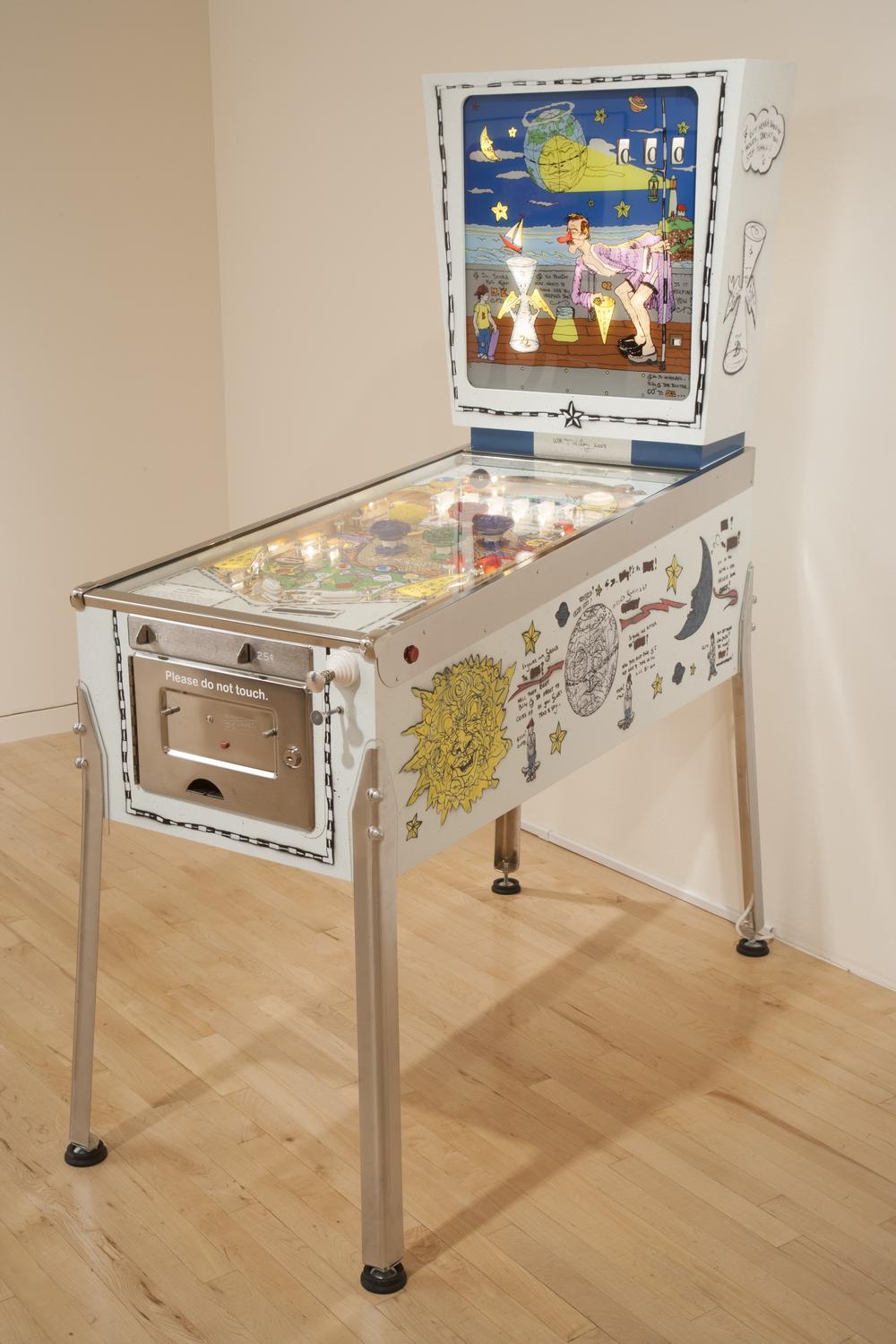William T. Wiley. Dude Ranch Dada

In 1967 William T. Wiley sent an envelope of dust from his studio to mail artist Ray Johnson, asking him to make a sculpture at the Museum of Modern Art using dust collected from the Whitney Museum of American Art. (Johnson replied amusingly that he had instead eaten the dust.) Wiley then sent an envelope of dust from his studio to artist Terry Fox in Paris, asking him to exchange it for dust from the Egyptian galleries at the Louvre.1 Through theatrical events, an extensive use of wordplay, and propositions such as his “dust exchange,” Wiley continued the conceptual legacy of Dada—where collaboration, play, and chance are integral to the work.2 Like the Dadaists, Marcel Duchamp in particular, Wiley manipulates the rules of language for poetic and political possibilities. In his series of playable pinball machines—made from original 1964 Gottlieb North Star pinball machines given to the artist by a game collector—Punball Machine (2008) is a “global warning” about global warming with texts like “the eye scabs are melting.”
Joann Moser, “What’s It All Mean?” in What’s It All Mean: William T. Wiley in Retrospect (Berkeley: University of California Press; and Washington, DC: Smithsonian American Art Museum, 2009), 30. ↩︎
Hilton Kramer, “Wiley of the West: ‘Dude Ranch Dada,’” New York Times, May 16, 1971, available at nytimes.com/1971/05/16/archives/wiley-of-the-west-dude-ranch-dada.html. ↩︎